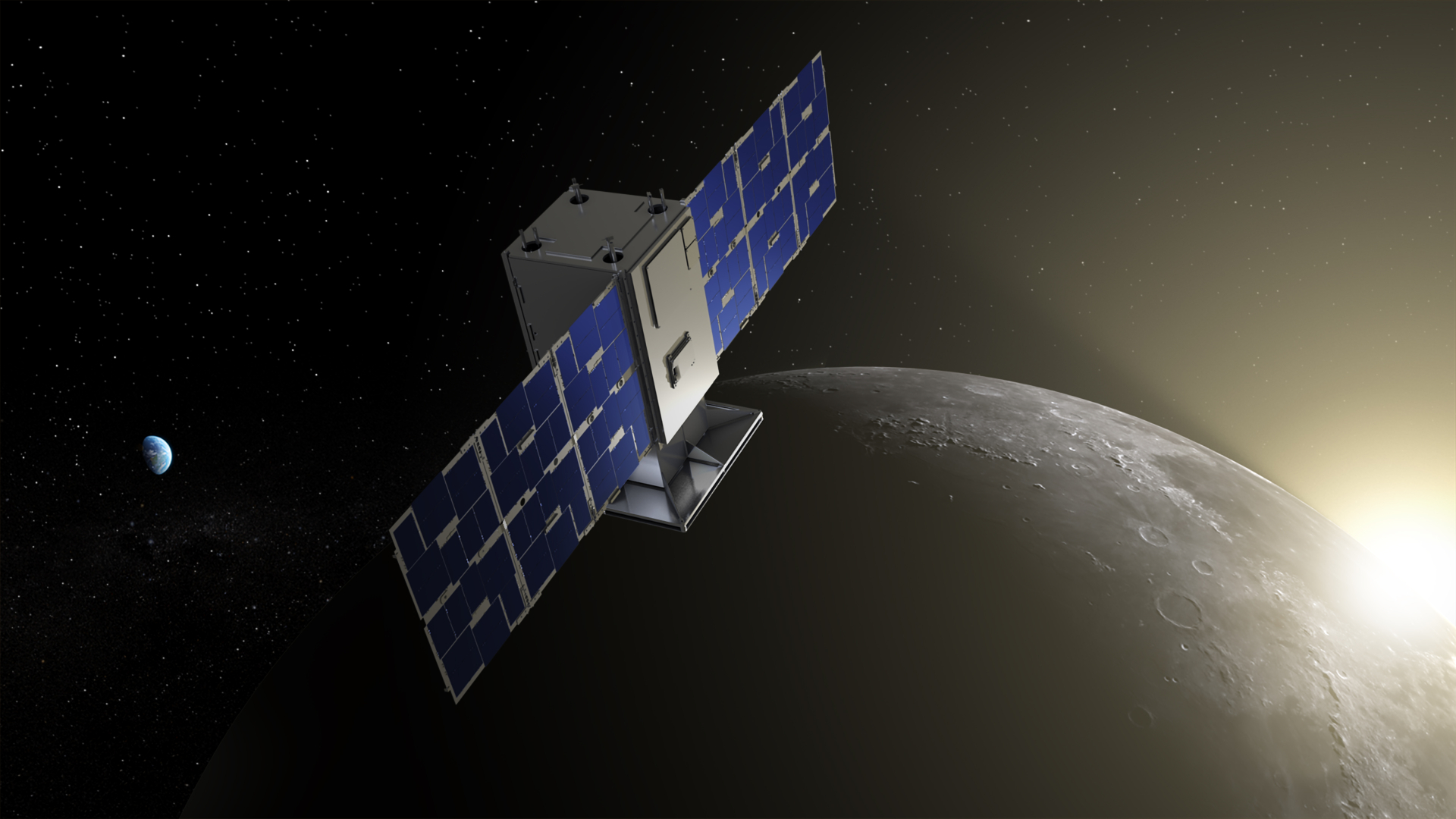NASA's tiny CAPSTONE probe aces 1st engine burn en route to the moon

NASA's little CAPSTONE moon probe has bounced back from its recent hiccup.
The 55-pound (25 kilograms) CAPSTONE successfully performed its first engine burn today (July 7), an 11-minute maneuver that started at 8:30 a.m. EDT (1230 GMT) and changed its velocity by 45 mph (72 kph) as planned, NASA officials said in an update.
CAPSTONE is now about 289,000 miles (465,000 kilometers) from Earth, agency officials added. That's significantly beyond the orbit of the moon, but that's part of the plan; the probe is taking a long, looping and highly fuel-efficient path that will deliver it to lunar orbit on Nov. 13.
Related: Why it'll take NASA's tiny CAPSTONE probe so long to reach the moon
Today's burn was initially supposed to happen on Tuesday (July 5), but the CAPSTONE team delayed it after briefly losing contact with the cubesat. That communication loss occurred on Monday (July 4), shortly after CAPSTONE separated from its Rocket Lab Photon spacecraft bus and began its long solo trek to the moon. (CAPSTONE launched on June 28 atop a Rocket Lab Electron booster, then spent a week in Earth orbit, spiraling farther and farther from our planet via Photon engine burns.)
The CAPSTONE team announced yesterday morning (July 6) that it had re-established contact with the microwave-oven-sized probe. And mission engineers have already figured out what caused the dropout.
On Monday, while investigating inconsistent CAPSTONE ranging data noticed by technicians with NASA's Deep Space Network, "the spacecraft operations team attempted to access diagnostic data on the spacecraft's radio and sent an improperly formatted command that made the radio inoperable," NASA officials wrote in another update today.
Breaking space news, the latest updates on rocket launches, skywatching events and more!
"The spacecraft fault detection system should have immediately rebooted the radio but did not because of a fault in the spacecraft flight software," they added. "CAPSTONE's autonomous flight software system eventually cleared the fault and brought the spacecraft back into communication with the ground, allowing the team to implement recovery procedures and begin commanding the spacecraft again."
CAPSTONE is now fully up to speed, if today's burn is any indication. And the probe will get a chance to strut its stuff again soon: the mission team plans to conduct another trajectory-correcting burn on Saturday (July 9).
There will be a series of other burns after that, allowing CAPSTONE to refine its course toward the moon. If all goes according to plan, the cubesat will slide into a highly elliptical near rectilinear halo orbit (NRHO) around Earth's nearest neighbor about four months from now.
The lunar NRHO is thought to be highly stable, which explains why NASA chose it for its Gateway space station, an important part of the agency's Artemis program of moon exploration. But no spacecraft has ever occupied a lunar NRHO before. CAPSTONE will spend at least six months in the orbit, helping engineers and mission planners verify its purported stability.
CAPSTONE also carries two technology demonstrations that could help future spacecraft navigate near the moon without as much tracking from Earth as is currently required, NASA officials have said.
CAPSTONE (short for "Cislunar Autonomous Positioning System Technology Operations and Navigation Experiment") is a NASA project, but Colorado company Advanced Space operates the mission under a $20 million contract the space agency awarded in 2019.
Mike Wall is the author of "Out There" (Grand Central Publishing, 2018; illustrated by Karl Tate), a book about the search for alien life. Follow him on Twitter @michaeldwall. Follow us on Twitter @Spacedotcom or on Facebook.

Michael Wall is a Senior Space Writer with Space.com and joined the team in 2010. He primarily covers exoplanets, spaceflight and military space, but has been known to dabble in the space art beat. His book about the search for alien life, "Out There," was published on Nov. 13, 2018. Before becoming a science writer, Michael worked as a herpetologist and wildlife biologist. He has a Ph.D. in evolutionary biology from the University of Sydney, Australia, a bachelor's degree from the University of Arizona, and a graduate certificate in science writing from the University of California, Santa Cruz. To find out what his latest project is, you can follow Michael on Twitter.
